Top 10 Foods Highest in Potassium
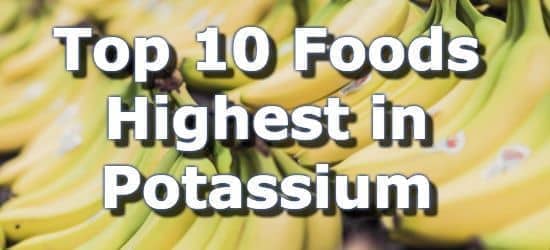
Potassium is an essential nutrient used to maintain fluid and electrolyte balance in the body. It also plays a critical role in the transmission of electrical impulses in the heart.
A deficiency in potassium causes fatigue, irritability, and hypertension (high blood pressure). (2) Unless you are on dialysis or have a special condition, an overdose of potassium from natural sources is nearly impossible. Signs of high potassium blood levels include weakness, paralysis, and heart palpitations. (2)
High potassium foods include leafy green vegetables, fish, white beans, avocados, potatoes, acorn squash, milk, mushrooms, bananas, and cooked tomatoes. The current daily value (DV) for potassium is 4700 milligrams (mg), recently raised from 3500mg by the FDA. (1)
Below is a list of high potassium foods ranked by common serving sizes, for more see the lists of high potassium foods by nutrient density, more potassium rich foods, fruits high in potassium, and vegetables high in potassium.
You can also sort high potassium foods by 100 gram and 200 calorie serving sizes using the nutrient ranking tool.
Looking to consume less potassium? See our list of low potassium foods.
-
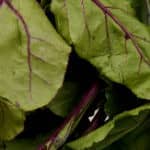 1. Beet Greens
1. Beet Greens
Potassium
per Cup CookedPotassium
per 100gPotassium
per 200 Calories1309mg
(28% DV)909mg
(19% DV)6733mg
(143% DV)More Greens High in Potassium
- 20% DV in 1 cup of cooked Swiss chard
- 18% DV in 1 cup of cooked spinach
- 8% DV in 1 cup of cooked kale
See the list of high potassium vegetables.
-
 2. Salmon
2. Salmon
Potassium
per 6oz FilletPotassium
per 100gPotassium
per 200 Calories1068mg
(23% DV)628mg
(13% DV)690mg
(15% DV)More Fish High in Potassium
- 19% DV in a 6oz snapper fillet
- 18% DV in a 6oz mahi-mahi fillet
- 14% DV in a 6oz tilapia fillet
See all fish high in potassium.
-
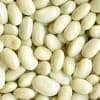 3. Large White Beans
3. Large White Beans
Potassium
per CupPotassium
per 100gPotassium
per 200 Calories1004mg
(21% DV)561mg
(12% DV)807mg
(17% DV)More Beans High in Potassium
- 20% DV in 1 cup of lima beans
- 16% DV in 1 cup of navy beans
- 16% DV in 1 cup of lentils
See all beans high in potassium.
-
4. Avocados
Potassium
per AvocadoPotassium
per 100gPotassium
per 200 Calories975mg
(21% DV)485mg
(10% DV)606mg
(13% DV)See the list of fruits high in potassium.
-
 5. Potatoes
5. Potatoes
Potassium
in a Medium PotatoPotassium
per 100gPotassium
per 200 Calories926mg
(20% DV)535mg
(11% DV)1151mg
(24% DV)Note: Sweet potatoes are actually better for regulating blood sugar levels and are higher in nutrients than white potatoes. An average baked sweet potato with skin (180g) provides 18%DV of potassium.
-
 6. Acorn Squash
6. Acorn Squash
Potassium
per Cup CookedPotassium
per 100gPotassium
per 200 Calories896mg
(19% DV)437mg
(9% DV)1561mg
(33% DV)More Squash High in Potassium
- 16% DV in 1 cup of Hubbard squash
- 12% DV in 1 cup of butternut squash
- 10% DV in 1 cup of zucchini
See the list of high potassium vegetables.
-
 7. Milk
7. Milk
Potassium
per 16oz GlassPotassium
per 100gPotassium
per 200 Calories732mg
(16% DV)150mg
(3% DV)714mg
(15% DV)More Dairy High in Potassium
- 12% DV in 1 cup of low-fat yogurt
- 9% DV in 1oz of gjetost cheese
- 8% DV in 1 cup of low fat buttermilk
See all dairy high in potassium.
-
 8. White Button Mushrooms
8. White Button Mushrooms
Potassium
per Cup CookedPotassium
per 100gPotassium
per 200 Calories555mg
(12% DV)356mg
(8% DV)2543mg
(54% DV)More Mushrooms High in Potassium
- 8% DV in 1 cup of crimini mushrooms
- 8% DV in 1 cup of oyster mushrooms
- 7% DV in 1 cup of portabellas
See the list of high potassium vegetables.
-
 9. Bananas
9. Bananas
Potassium
per Cup SlicedPotassium
per 100gPotassium
per 200 Calories537mg
(11% DV)358mg
(8% DV)804mg
(17% DV)More Fruits High in Potassium
- 15% DV in 1 cup of guavas
- 12% DV in 1 cup of kiwifruit
- 10% DV in 1 cup of cantaloupe melon
See the list of fruits high in potassium.
-
 10. Tomato
10. Tomato
Potassium
per Cup CookedPotassium
per 100gPotassium
per 200 Calories523mg
(11% DV)218mg
(5% DV)2422mg
(52% DV)- 8% DV in 1 cup of cherry tomatoes
- 6% DV in an average tomato
Printable One Page Sheet
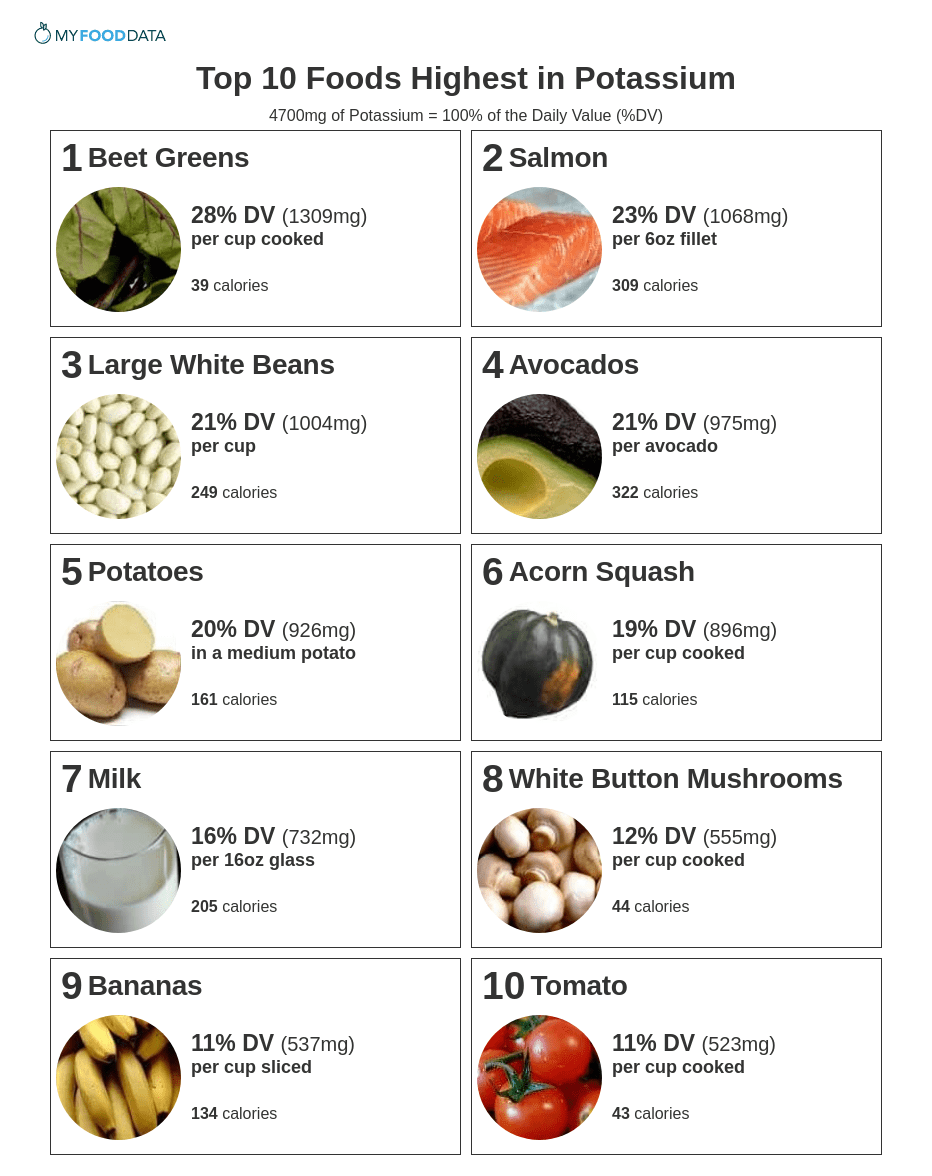
High Potassium Foods by Nutrient Density (Potassium per 100 Grams)
| Food | Serving | Potassium |
|---|---|---|
| 1. Dried Herbs (Chervil) | 100 grams | 101% DV (4740mg) |
| 2. Sun-Dried Tomatoes | 100 grams | 73% DV (3427mg) |
| 3. Cocoa Powder | 100 grams | 53% DV (2509mg) |
| 4. Whey Powder | 100 grams | 49% DV (2289mg) |
| 5. Paprika | 100 grams | 49% DV (2280mg) |
| 6. Yeast Extract Spread | 100 grams | 45% DV (2100mg) |
| 7. Bran | 100 grams | 32% DV (1485mg) |
| 8. Molasses | 100 grams | 31% DV (1464mg) |
| 9. Soybeans (Dry-Roasted) | 100 grams | 29% DV (1364mg) |
| 10. Seaweed (Spirulina) | 100 grams | 29% DV (1363mg) |
Other Potassium Rich Foods
| Food | Serving | Potassium |
|---|---|---|
| 1. Dried Figs | 1 cup | 22% DV (1013mg) |
| 2. Coconut Water | per cup | 13% DV (600mg) |
| 3. Whelk | 3oz serving | 13% DV (590mg) |
| 4. Clams | per 3oz serving | 11% DV (534mg) |
| 5. Orange Juice | 1 cup | 11% DV (496mg) |
| 6. Brussels Sprouts | 1 cup | 7% DV (342mg) |
| 7. Pistachios (Dry Roasted) | per 1 oz handful | 6% DV (286mg) |
| 8. Palm Hearts | 1 cup | 5% DV (258mg) |
| 9. Sunflower Seeds | per 1oz Handful | 5% DV (241mg) |
| 10. Seeds (Squash and Pumpkin Seeds) | per 1oz handful | 5% DV (224mg) |
| 11. Almonds | per 1oz Handful | 4% DV (208mg) |
| 12. Dried Watermelon Seeds | per 1oz handful | 4% DV (184mg) |
| 13. Chestnuts | per oz (~3 chestnuts) | 4% DV (168mg) |
| 14. Dates | per date | 4% DV (167mg) |
| 15. Cashews (Dry Roasted) | per 1 oz handful | 3% DV (160mg) |
| 16. Walnuts | per oz | 3% DV (125mg) |
How much potassium do you need each day?
The daily value (%DV) for Potassium is 4700mg and is a general target intended for most people. Adquate intakes (%AI) take age and gender into account and range from 2000mg - 3400mg for most people.
| Life Stage | AI | Infants |
|---|---|
| 0-6 months old | 400mg |
| 7-12 months old | 860mg |
| Children | |
| 1-3 years old | 2000mg |
| 4-8 years old | 2300mg |
| Males | |
| 9-13 years old | 2500mg |
| 14-18 years old | 3000mg |
| 19+ years old | 3400mg |
| Females | |
| 9-13 years old | 2300mg |
| 14-18 years old | 2300mg |
| 19+ years old | 2600mg |
| Pregnancy | |
| 14-18 years old | 2600mg |
| 19+ years old | 2900mg |
| Lactation | |
| 14-18 years old | 2500mg |
| 19-30 years old | 2800mg |
Who is at Risk for Potassium Deficiency?
- Alcoholics (3)
- People with a magnesium deficiency - Low magnesium levels increase potassium excretion and further increase the risk of muscle cramps and cardiac arrhythmias. (2)
- People taking Diuretics - Diuretics like thiazide, which are used to regulate high blood pressure, can increase the amount of potassium excreted in urine. Certain potassium sparing diuretics have the opposite effect and can cause the body to retain too much potassium. If you are taking diuretics talk to your health care provider for more information. (2)
Health Benefits of Potassium
- Alleviation of High Blood Pressure (Hypertension) and Reduced Risk of Stroke - A diet low in potassium and high in sodium can result in high blood pressure over time. High blood pressure causes damage to the arteries and veins, which can lead to strokes and heart disease. Eating foods high in potassium while limiting foods high in sodium can help reduce blood pressure over time. (2,3)
- Reduced Risk of Kidney Stones - Adequate potassium levels are necessary for calcium reabsorption from the kidneys. Diets low in potassium lead to higher levels of calcium in the kidney which increase the risk of kidney stones. (2,3)
- Osteoporosis Protection - Several studies have found a relationship between increased bone density and increased intake of dietary potassium. These studies were true even for post-menopausal women and older men. (2,3)
- Reduced Risk of Type II Diabetes - Potassium is necessary for insulin secretion, and numerous studies have found a correlation between low potassium levels and higher levels of fasting blood glucose and insulin resistance. (2,3)
What foods are low in potassium?
Foods low in potassium include most refined fats and oils, grains like cornmeal, white rice, and white pasta, some cheeses like soft goat cheese, blueberries, leeks, and napa cabbage. Boiling vegetables in water and discarding the water they are cooked in can help reduce their potassium and electrolyte content. For more, see the article on low potassium foods, and low potassium vegetables.
About the Data
Data for the curated food lists comes from the USDA Food Data Central Repository.
You can check our data against the USDA by clicking the (Source) link at the bottom of each food listing.
Note: When checking data please be sure the serving sizes are the same. In the rare case you find any difference, please contact us and we will fix it right away.
About Nutrient Targets
Setting targets can provide a guide to healthy eating.
Some of the most popular targets include:- Daily Value (%DV) - The daily value (%DV) is a general guideline for consumption that will prevent deficiency of a particular nutrient in most people. The %DV refers to the percentage of an amount that\'s found in a single serving of a food. It also accounts for absorption factors. It is set by the U.S. FDA.
- Recommended Dietary Allowance (%RDA) - The RDA sets an average daily dietary intake level that is sufficient to meet the nutrient requirements of nearly all (97.5%) healthy individuals. It\'s more specific than the daily value, and varies by age and gender. The RDA is set by the US National Institutes of Health.
- Reference Dietary Intake (%RDI) -The reference dietary intake is similar to the recommended daily allowance, but is specific to age and gender. The RDI for amino acids is set by the U.N. World Health Organization.
- Adequate Intake (%AI) - This value is primarily used in reference to omega-3 and omega-6 fats. The Adequate Intake is set by the U.S. Institute of Medicine. Because there is less evidence to determine the ideal targets for consumption of these nutrients, the specific amount is considered to be less reliable. Using the term Adequate Intake, rather than one of the other terms, helps to emphasize that the ideal intake of that particular nutrient has not yet been scientifically determined.
See the Guide to Recommended Daily Intakes for more information.
Want to set your own targets? Sign up for an account and set custom targets in the daily food log.From the Nutrient Ranking Tool
Use the ranking tool links below to select foods and create your own food list to share or print.
- Foods High in Potassium
- Foods Low in Potassium
- Vegetables High in Potassium
- Fruits High in Potassium
- Vegetarian Foods High in Potassium
- Nuts High in Potassium
- Grains High in Potassium
- Beans High in Potassium
- Dairy High in Potassium
- Breakfast Cereals High in Potassium
- Fast Foods High in Potassium
View more nutrients with the nutrient ranking tool, or see ratios with the nutrient ratio tool.
Related
Data Sources and References
Try the recipe nutrition calculator, or daily meal planner.
Create a free account to log and track foods.

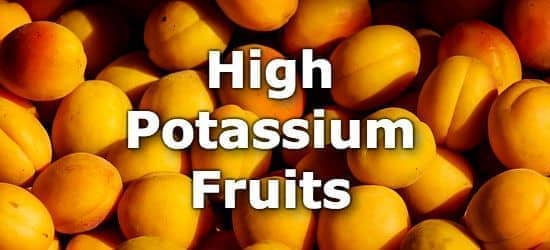 Next ➞
Next ➞